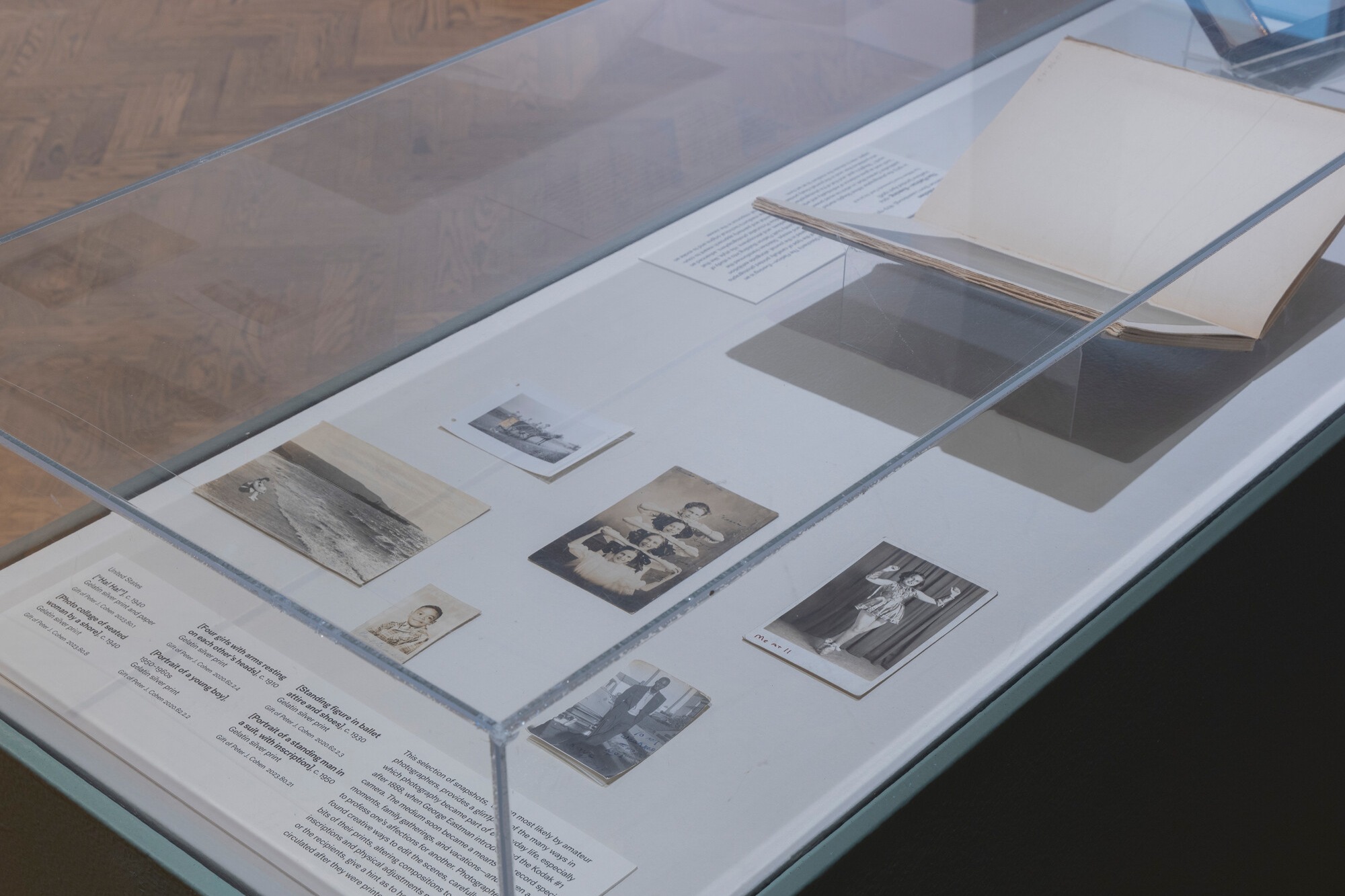
The Photographs You Might—but Really Shouldn’t—Miss in “Annotations”
By Tara Kaushik
November 20, 2025–At the entrance of Mia’s Harrison Photography Gallery (364), where the exhibition “Annotations” is currently on view, is a glass case displaying six small photographs. They’re sepia-toned or black and white, and could easily be missed among the larger, framed images surrounding them.
There’s limited information about these photographs—both their subjects and creators are unknown, but it’s likely they were all taken by amateur photographers. They offer an example of vernacular photography, the fancy term for photos anyone might take in the course of everyday life: a selfie with a friend, a funny sight on the way home from work, an artwork you liked on a visit to Mia.
Such pictures can be found in print, stored in boxes or photo albums, published in photo books, or shared online and on social media. Because image-making has become so much a part of daily life with the advent of camera phones, we might forget that every image, even the most mundane, captures a significant moment in time. Photographs document our lives and experiences, and in doing so, create a visual record of our existence.
No one appreciates this fact quite like Peter J. Cohen, a New York–based collector of one of the largest archives of anonymous vernacular photographs in the United States. Spanning the late 19th century to the 1980s, the Peter J. Cohen Collection currently houses more than 100,000 photographs, encompassing a range of processes and formats, including gelatin silver prints, cyanotypes, hand-tinted photographs, chromogenic color prints, Polaroids, real photo postcards, and complete photo albums.
Cohen had been a collector of fine art photography for years before stumbling across some photos torn out of family albums at a flea market. He found them intriguing, these anonymous images capturing fragments of family life, and bought five.
So began a relentless journey of collecting across a dizzying array of subjects—the archive is organized into around 130 categories (and counting), including baseball, powerlifters, parades, fish, bicycles, monuments, umbrellas, and more. The breadth of these categories is a testament to both Cohen’s extensive collecting interests and to the highly diverse nature of anonymous vernacular photography.
The five photographs above all come from a gift made by Cohen to Mia. Comprising 375 photographs, this generous gift widens the definition of what belongs in a museum, expanding the story of American photography beyond the studio and the art market. Cohen’s disciplined, theme-driven collecting—and the tremendous amount of cataloguing, housing, and description it entails—exemplify dedicated preservation and a reverence for everyday image-making as a form of cultural history and storytelling.
Learn more about Cohen and his collection in this video, courtesy of the University of Michigan Museum of Art.
On view through November 30, 2025, in Mia’s Harrison Photography Gallery, “Annotations” brings together approximately 50 works drawn largely from the museum’s renowned photography collection. Spanning the 19th century to today, the exhibition features daguerreotypes, inkjet and gelatin silver prints, photogravures, and contemporary experimental processes, including photographs made with flour and water from the Mississippi River.
In an age when photography is often equated with digital immediacy, “Annotations” invites visitors to see photographs as physical objects—surfaces to be retouched, painted, marked, and even embroidered.
See More at Mia
Opening December 20, 2025, in the Harrison Photography Gallery, “Containing Multitudes” showcases more photographs from the gift of Peter J. Cohen, among other images.
For 250 years, the United States has defined itself in terms of plurality. Its Latin motto, e pluribus unum (out of many, one), notes the interdependence of the multiple and the singular in our national conception. This exhibition explores the diversity of American experience that photographs can hold. It also examines the manner in which photographers have sought to “contain multitudes,” in the words of the 19th-century writer Walt Whitman, by maintaining an expansive ecosystem of images celebrating the contradictions of American life, culture, and history.
